BREAK FROM REALITY
INSTALLATION_2024
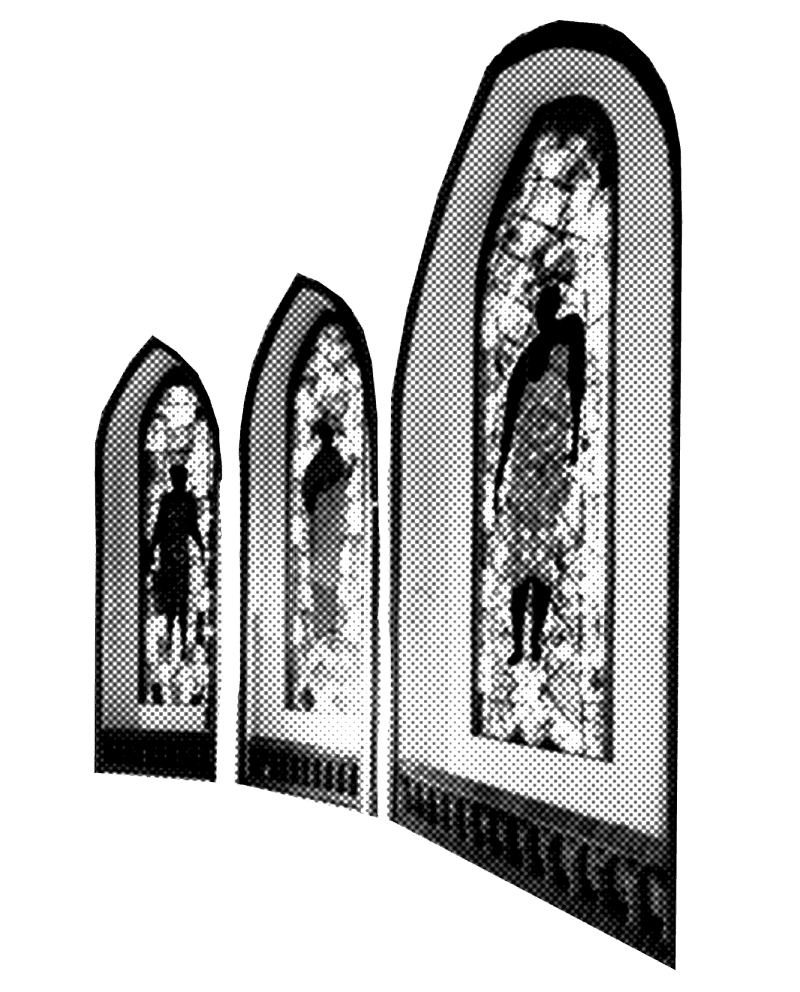
"Break from Reality" aims to dismantle the colonial ideologies spread by European missionaries in 19th-century Ghana, which perpetuated white superiority. The project empowers Black communities by portraying the Black proletariat as equals to the white man. Using fabrics collected from local proletarians in Ghana, symbolizing their daily lives and struggles, these textiles reinterpret stained glass windows by depicting the Black proletariat in place of colonial iconographies found within Ghanaian churches. This transforms the Nikolaikirche (BERLIN), historically linked to colonialism, into an inclusive space celebrating Black resilience. The project challenges the erasure of Black narratives, asserting their rightful place in public discourse and reclaims agency over their identities.
The visual transformations are accompanied by sound installations that deepen the immersive experience of Nikolaikirche. The soundscape, crafted using field recordings from local Ghanaian communities, captures the everyday rhythms, voices, and expressions of the proletariat. The soundscape also draws on two powerful sources: “Fake Jesus” by Prophet Seer1 CFM, sourced from YouTube, and “Lumumba Explain, Episode 9: Religion” by Thee Alfa House, featuring Plo Lumumba, also sourced from YouTube. These sound clips fused together provide a critical narrative on the role of religion and colonialism, challenging imposed ideologies and reinforcing the liberation of Black and African minds.
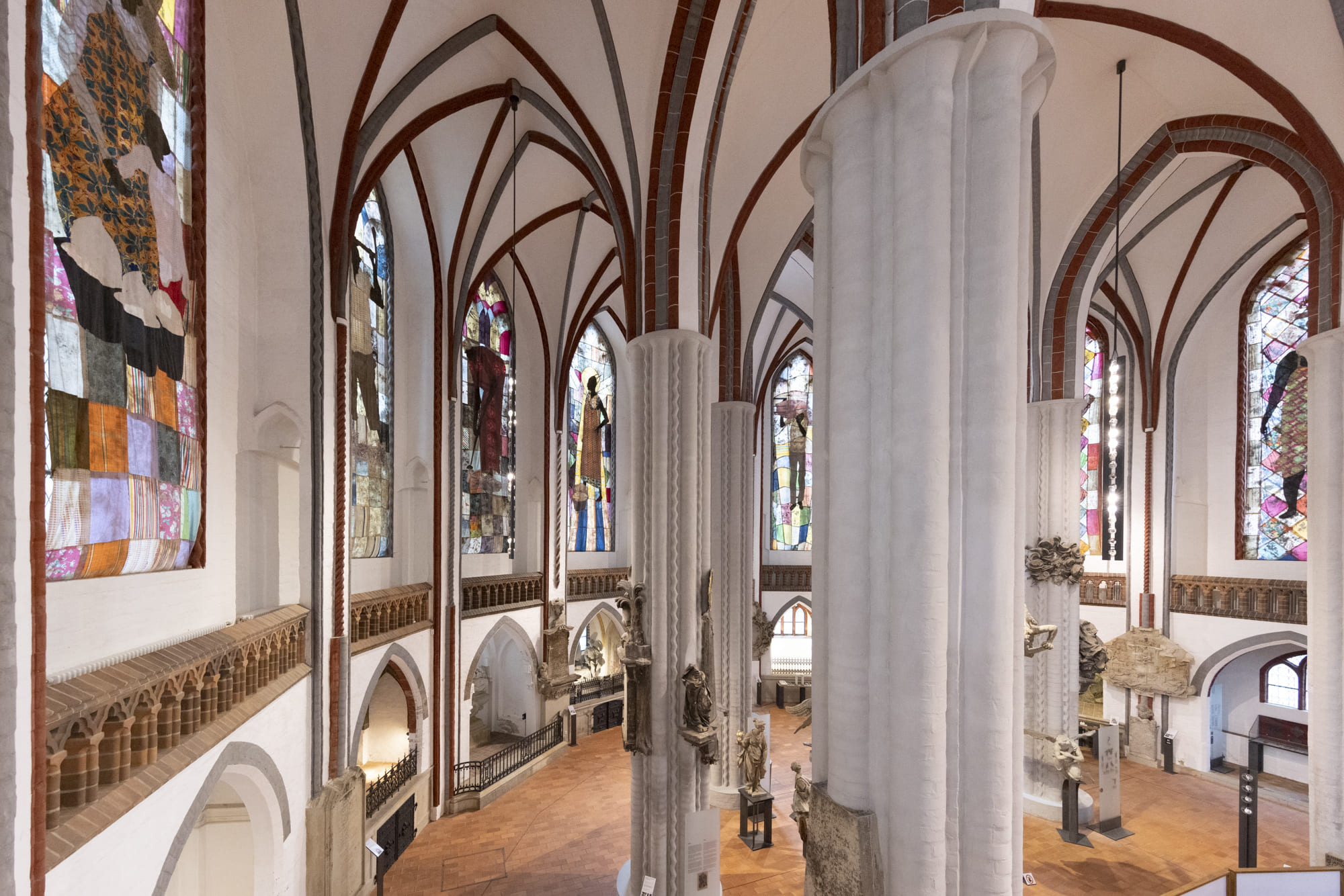
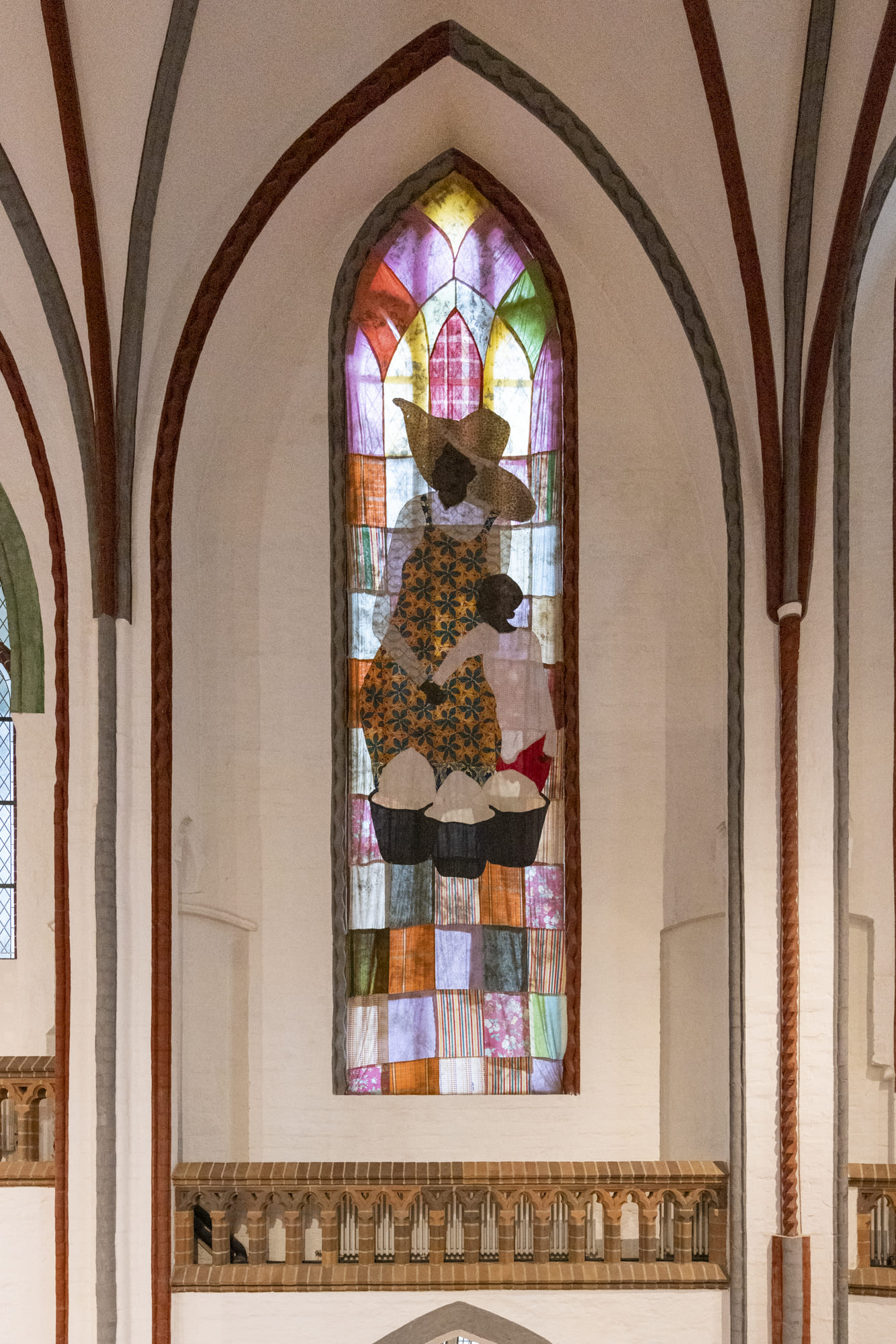
← Auntie-Dedei-Ashikishan
This work pays tribute to Rebecca Naa Dedei Aryeetey, a trailblazing Ghanaian businesswoman, feminist, and political activist whose influence shaped Ghana's pre-independence political landscape. Known for her pivotal role in campaigning and funding Kwame Nkrumah and the Convention People’s Party (CPP), Dedei leveraged her position as a prominent flour merchant to mobilize market women. Her efforts played a crucial role in Ghana's fight for independence, highlighting the power and impact of women in the socio-political struggles of the era.
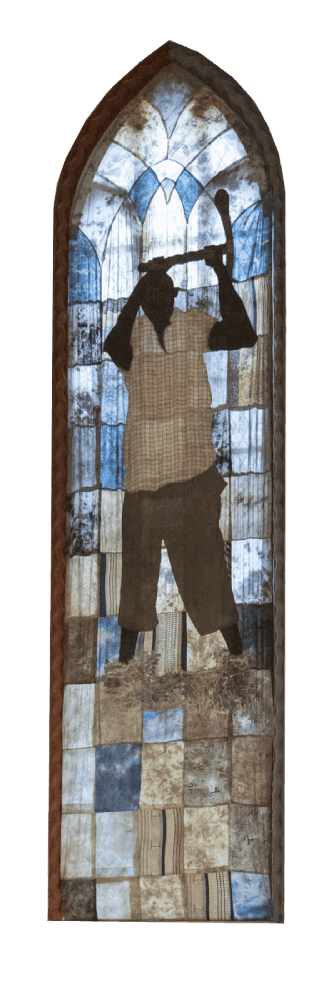
← Agya Galamsey
This work draws inspiration from the pervasive issue of illegal gold mining, known locally as galamsey, in Ghana. It critiques the exploitation of local proletarians by foreign multinational companies and politicians, who profit from gold extraction while leaving devastating consequences for the Ghanaian people. The environmental disasters caused by galamsey, including severe water and land pollution, deprive communities of clean water and fertile land, leaving long-lasting impacts on people's health. The work serves as a commentary on greed-driven exploitation and the profound environmental and social toll it exacts on the Ghanaian population.
obra twa owuo →
(Translation: Life Has an End in Death)
This work portrays a Ghanaian woman in her late age cutting logs, highlighting the harsh realities faced by the elderly due to economic struggles and societal uncertainties. It sheds light on how the economy treats the elderly proletariat, offering no respite in their later years. With the absence of a sufficient social security system to support them, many are forced to continue hustling and working until the very end of their lives. The piece serves as a poignant reflection on the resilience and hardships of aging in an unforgiving economic landscape.
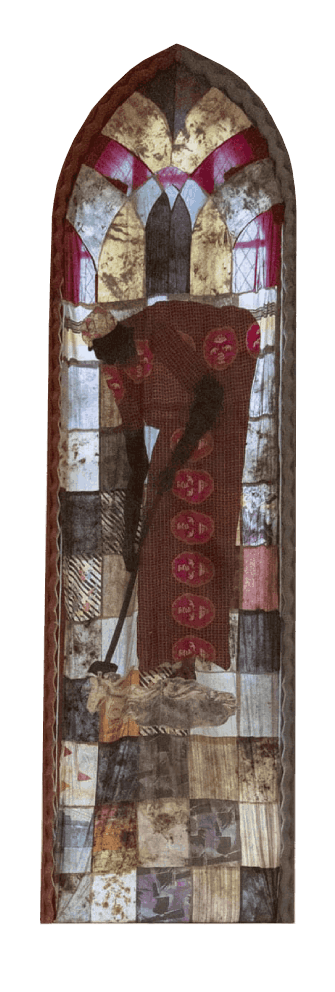
Ɔhoteni Akua Fokuo →
This work pays tribute to a remarkable market woman, Akua Fokuo, who played a pivotal role in shaping the early stages of my artistic practice. She graciously introduced me to other market women, creating opportunities for me to connect with the local proletariat and bridge the gap between my art and their lived experiences.
With the title Ɔhoteni (saint) I refer to the veneration of ancestors after their passing, honoring them as revered figures. This work celebrates her legacy and acknowledges her impact on my journey.
The hair design depicted in the work draws inspiration from the intricate braiding practices used by enslaved Africans, where braids often served as covert maps marking escape routes to freedom. By referencing this powerful symbol, the piece weaves together themes of resilience, guidance, and liberation, underscoring Akua Fokuo’s enduring influence and the spirit of freedom she represents.
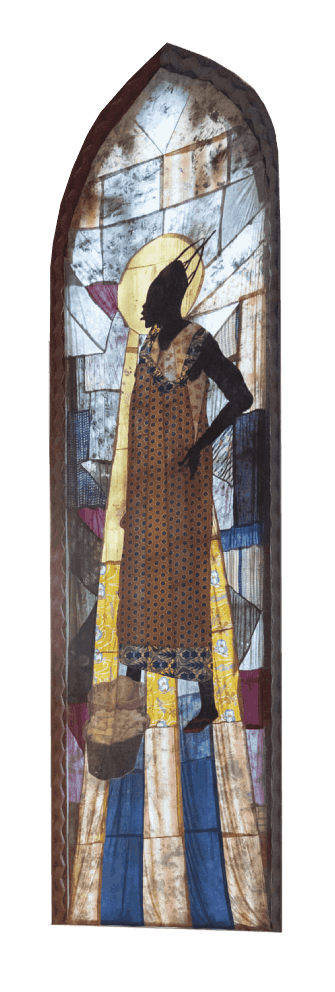

← Kayayie carrying his load
“Kayayie” and “Paa oo paa” are Ghanaian terms used to describe individuals who carry loads on their heads, often for minimal compensation. This work acknowledges the immense contributions and resilience of these vulnerable porters, highlighting their essential role in Ghana’s socio-economic landscape. Despite limited resources, their efficiency makes them a critical component of urban transportation in Ghana. The piece depicts a “paa oo paa” man carrying a load in a plastic sack, drawing a parallel to the biblical imagery of Christ bearing the cross, as portrayed by Renaissance painter Il Bergognone. Through this reference, the work situates their labor within a broader narrative of sacrifice, endurance, and humanity.
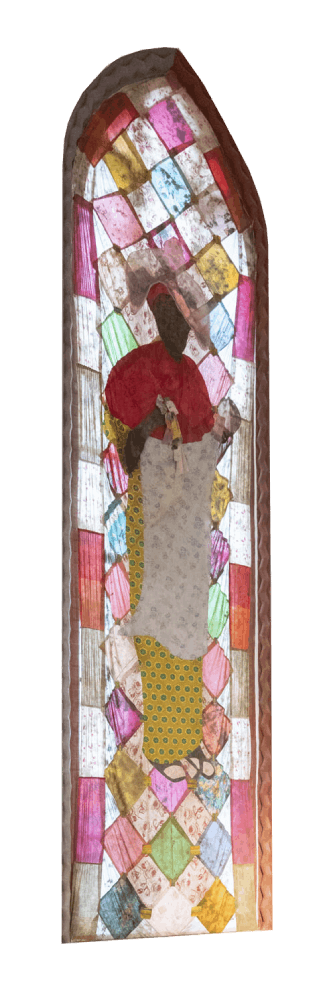
mommy lorry →
highlights the pivotal role and profound influence of Ghanaian market women in shaping the country’s political, social, economic, and historical landscape. The work references a bold and radical decision made by market women in the Gold Coast (now Ghana) to boycott British-style buses due to their inefficiency and inconvenience. These women later collaborated with commercial drivers to introduce passenger lorries, an initiative that not only transformed transportation in the Gold Coast but also laid the foundation for a long-lasting system.
The term “Mommy Lorry” was coined to honor the resilience and ingenuity of these market women, who not only spearheaded this transportation revolution but also ensured its continued success through their active patronage. These lorries symbolize resilience and resistance against the impractical and exclusionary policies imposed by the British colonial government.
← Asantewaa with the head of a dummy
“Asantewaa with the Head of a Dummy” reimagines the biblical story and classical painting of Judith with the Head of Holofernes within a Ghanaian context, emphasizing the daily struggles and resilience of Ghanaian market women as they strive to secure their livelihoods. This work draws attention to their indispensable role in economic and national development. The piece portrays a market woman carrying broni wawu (second-hand clothing) wrapped in plastic, with a dummy’s head cradled in her left arm, serving both as a striking visual metaphor and a practical display of her wares.
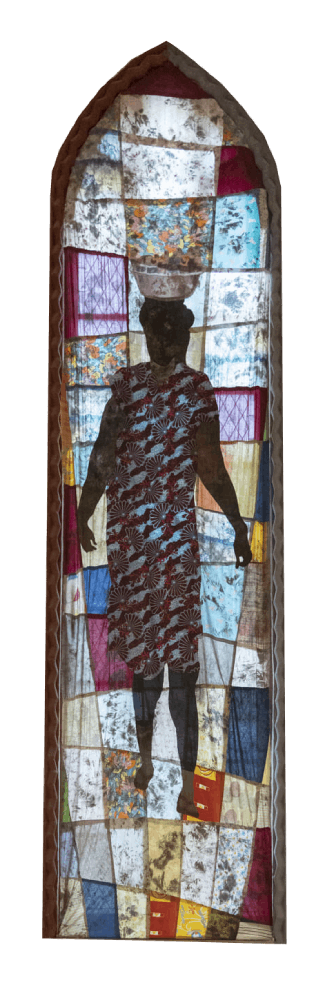
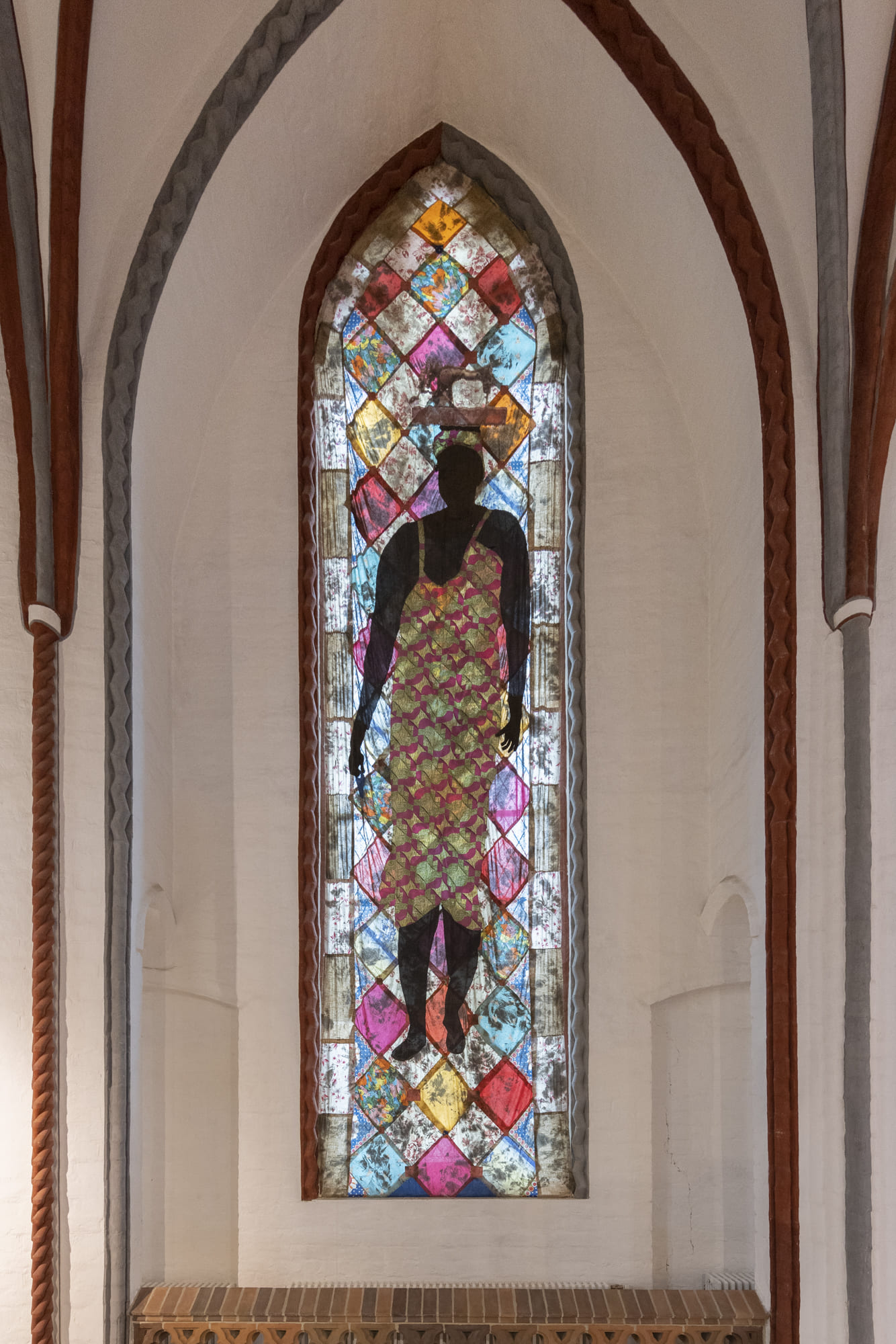
← oyeadieyie
“Oyeadieyie,” which translates to “They Do Things Well” in English, highlights the pivotal role of mobile tailors and seamstresses in the daily lives of Ghanaians and other African communities. These artisans expertly alter or create garments from materials presented to them, embodying a longstanding culture of repair and reuse. This practice reflects sustainable approaches deeply rooted in Ghanaian cultural and fashion traditions.
The work critiques the overproduction and consumerism of fast fashion in the Western world, which often results in excess clothing being dumped in African countries, contributing to environmental pollution. By juxtaposing these practices, Oyeadieyie calls for a reimagining of global fashion systems, urging a shift toward sustainable and ethical fashion practices that respect both cultural heritage and ecological balance.
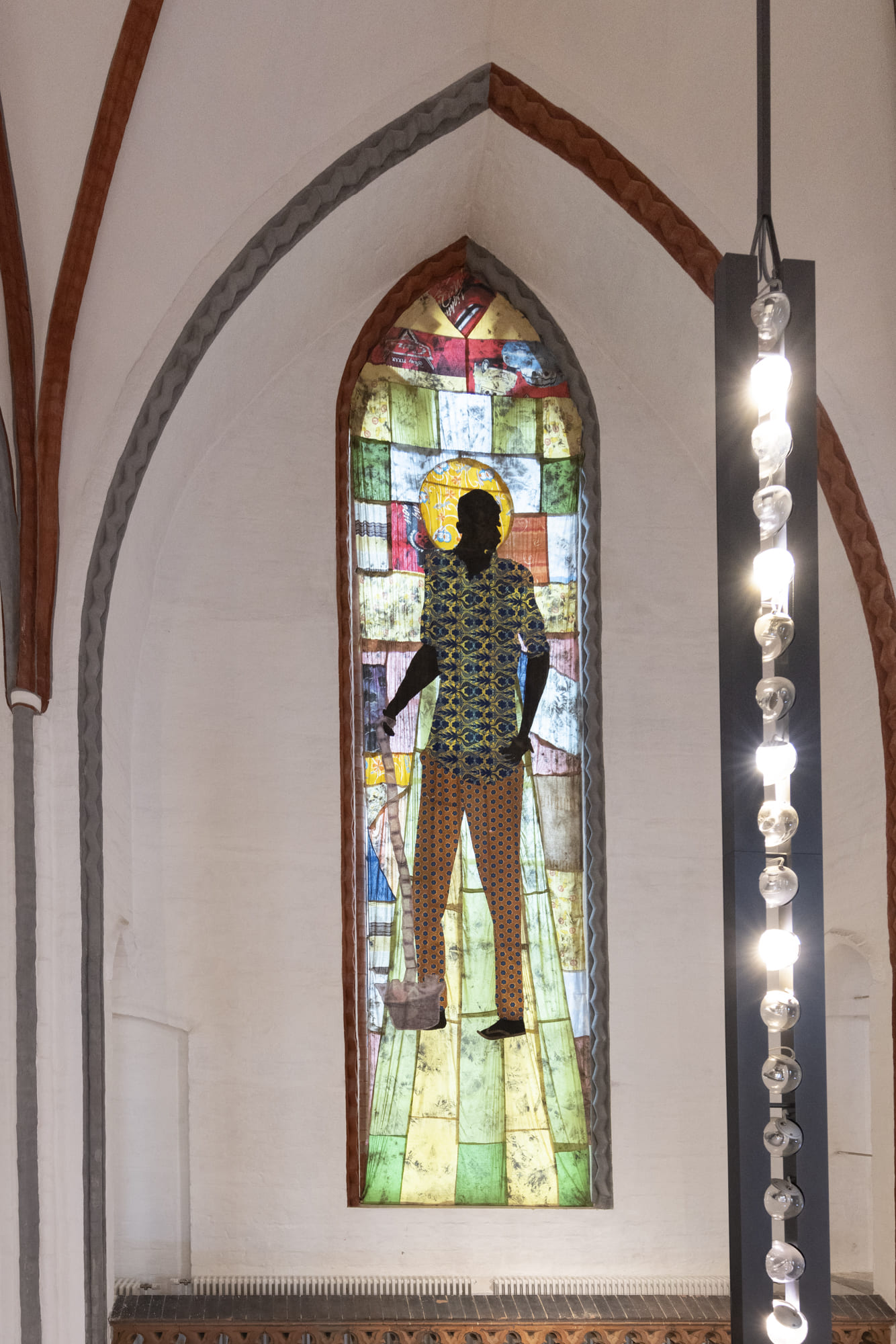
Ɔhoteni Olor →
This work honors a mechanic in Kumasi who introduced me to the local community of mechanics, fostering a deeper connection with their world. Through our interactions, we developed a personal bond that allowed me to engage meaningfully, bridging the gap between my practice and their daily experiences. This piece is a tribute to the trust and insight that emerged from this relationship, highlighting the significance of personal connections in artistic exploration.
With the title Ɔhoteni (saint) I refer to the veneration of ancestors after their passing, honoring them as revered figures. This work celebrates his legacy and acknowledges her impact on my journey.
The work references the biblical story and the painting The Ascension of Christ by James Thornhill.
organised by: Dekoloniale Festival 2024
concept: Percy nii nortey
photo: damian charles / dekoloniale 2024
Sound editing: megborna
Medium: stained second-hand Fabric (cotton, linen), thread, photo-transfer
size: 8.40 x 2 M
LOCATION: Berlin, 2024